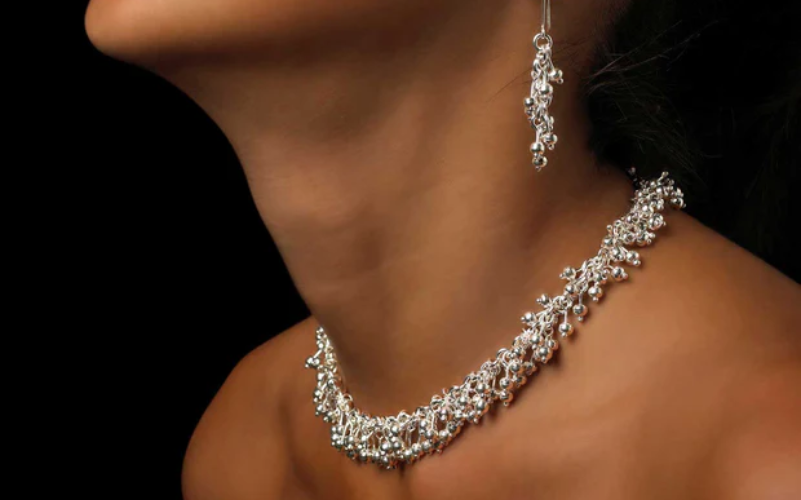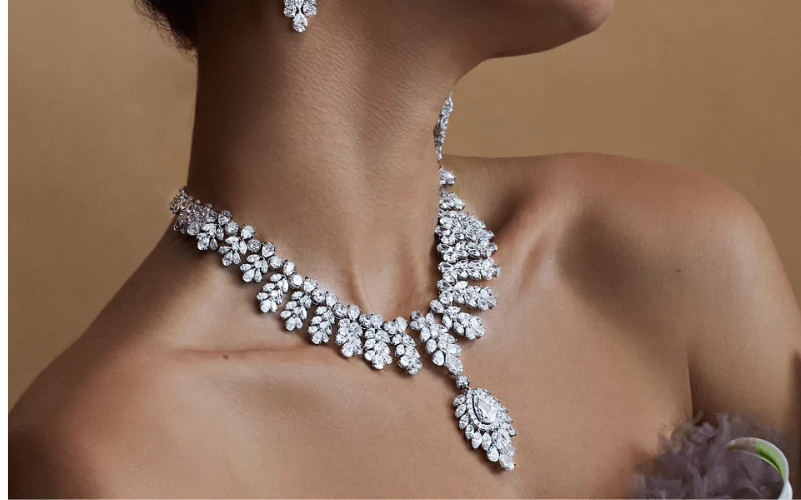
Jewelry has always reflected more than just luxury—it’s about emotion, memory, and identity. For centuries, artisans relied on sketchbooks, hand-sculpted wax models, and devoted hours of manual labor to bring one-of-a-kind designs to life. But the game changed when digital innovation stepped in.
Today, 3D design and technology have redefined how jewelers and clients collaborate. What was once reserved for elite craftsmanship is now accessible and highly personal. Through this shift, custom jewelry has evolved from a beautiful concept into a dynamic movement where art and science work hand in hand, letting every individual wear not just elegance, but their own story.
Key Takeaways
-
3D design has turned Jewelry creation into an efficient and expressive process.
-
Collaboration between client and designer builds trust and creativity.
-
Sustainability is now embedded in every digital design decision.
-
Emotional storytelling still fuels the essence of custom design.
-
The future promises more intuitive, human-centered technology.
The Journey From Sketch to Screen
Jewelry crafting has always demanded skill and patience. Traditionally, artisans spent days perfecting sketches before molding metal and setting stones, often repeating the process until achieving perfection. It was artistic, yes—but slow and limited.
Then came 3D Computer-Aided Design (CAD). This breakthrough turned imagination into visual precision. Designers could finally view every curve and contour before a single gem was placed. Later, Computer-Aided Manufacturing (CAM) added a production layer, allowing machines to shape designs from detailed blueprints.
That shift didn’t just accelerate production—it changed the way creativity was expressed. The designer’s vision now meets mathematical accuracy, giving birth to a generation of jewelry that carries both artistic flair and technological brilliance.
The Lifestyle Impact of Personalized Jewelry
Custom design has always carried emotional significance, but technology has turned jewelry into a deeply personal part of everyday life. People no longer see it as a luxury accessory; it has become a form of self-expression, a wearable reminder of moments and meaning. The ease of digital customization means anyone—from a young couple designing wedding bands to an artist reimagining a vintage pendant—can be part of the creative conversation.
Social media has amplified this trend. Customers love sharing 3D render previews or artist collaborations, showcasing not just the final piece but the story behind it. This transparency builds connection and pride, turning every purchase into a creative milestone rather than just a transaction.
Modern custom jewelry is shaping culture in real, relatable ways. It aligns individual identity with craftsmanship, connecting people through shared appreciation for detail, authenticity, and technology-driven design. As digital tools keep evolving, jewelry will continue to adapt—not losing its intimate touch but becoming even more personal, experiential, and emotionally fulfilling to those who wear it.
How 3D Design Transforms Custom Creations
3D design bridges the gap between what clients imagine and what artisans create. It sparks collaboration in a way that feels modern, inspiring, and immersive.
Seeing Before Making
Gone are the days of trusting a sketch. Now, clients can rotate, zoom in, and explore their future jewelry from every angle. The result? Fewer surprises, more satisfaction.
Faster Prototyping
Designers print resin or wax models directly from 3D files, turning imagination into something tangible within hours—not weeks.
Saving Resources and Time
Since designs are simulated digitally, jewelers minimize costly material waste and production errors.
Limitless Personalization
Gemstone cuts, metal textures, or engraving details—everything can be fine-tuned to mirror individual stories and preferences.
Flawless Results
CAD ensures perfect proportions. Every curve and symmetry point is measured down to microns, maintaining structural beauty and longevity.
When Technology Meets Emotion

We often measure new technology by productivity, but its real magic lies in how it strengthens human connection. Walk into a jewelry studio today, and conversation, not catalogues, drives creation.
Picture a couple designing a ring that mixes modern gold bands with an old family diamond. In the past, describing it to a jeweler meant hoping they “got it right.” Now, they can literally see it—change the gem angle, adjust the setting, feel the story being built piece by piece.
Technology didn’t take away the feeling behind jewelry—it gave those feelings a new way to shine. It turned creation into co-creation.
Key Technologies Shaping Jewelry Design
CAD (Computer-Aided Design)
The cornerstone of digital jewelry creation. Programs like Matrix Gold or Rhino Gold allow artisans to sculpt digital models that capture artistic detail with technical exactness.
CAM (Computer-Aided Manufacturing)
Where CAD meets reality. CAM systems convert 3D designs into wax or resin forms, carving them with impeccable precision.
3D Printing
A game-changer in prototyping. Printers layer materials based on digital files, letting clients hold a preview of their jewelry before it’s cast.
Laser Engraving
Ultra-sharp laser detailing allows messages, textures, or initials to be etched with a finesse no hand tool could ever achieve.
Augmented Reality (AR)
AR lets buyers “try on” rings or necklaces virtually before placing an order, bridging imagination and shopping in one seamless flow.
The Sustainability Edge
Luxury now demands responsibility. Traditional jewelry making often produced excessive waste, but 3D design reshapes that.
-
Digital precision minimizes material loss.
-
Shorter workflows reduce energy consumption.
-
In-house printing lowers transport emissions.
-
Digital tracking encourages ethical material sourcing.
Technology quietly leads a greener revolution—making custom jewelry not just personal but also planet-conscious.
Where Tradition Meets Technology
For all its sleek machinery and code-based perfection, jewelry design still thrives on human warmth. The trained eye of a goldsmith and the steady hand that sets the final gemstone remain irreplaceable.
Even when a design begins on-screen, it ends with handcrafted finesse. Designers merge centuries-old artistry with pixel-perfect innovation, maintaining authenticity at every stage. This balance of mind and heart defines the soul of today’s jewelry landscape—a perfect blend of old-world artistry with new-world intelligence.
The Challenges and Opportunities
Challenges:
-
Traditional artisans must adapt to digital tools and learn software workflows.
-
Buying 3D printers and CAD software requires a major upfront investment.
-
Some clients assume tech-driven jewelry lacks emotional touch.
Opportunities:
-
Boundless creativity and experimentation.
-
Perfect design replication for brand consistency.
-
Faster production cycles and quicker customer delivery.
-
Immersive, personalized customer experiences using AR and live previews.
For designers willing to evolve, these opportunities far outweigh the growing pains of modernization.
Innovation at Work
Across design houses, technology is leaving a visible mark.
Engagement Rings: Couples preview designs in real time, adjusting shapes and settings until they capture their story perfectly.
Heirloom Redesigns: Antique pieces can be digitally scanned, resized, and revitalized without damage.
Corporate Collections: Luxury brands use CAD modeling to create uniform yet elegant logo-based pendants and pins.
Limited Editions: Artists release exclusive 3D-printed jewelry runs backed by blockchain authenticity certificates.
Each case points to one truth—the future of jewelry lies in collaboration between creativity and computation.
Designing with Emotion

Every design holds a heartbeat. Behind every CAD screen is an artist translating someone’s memories into metal. These digital tools don’t reduce feeling—they capture it.
Many jewelers describe emotional client moments during visualization sessions—a parent seeing a pendant inspired by a child’s drawing, or someone designing a memorial locket for a lost loved one. These moments prove that technology doesn’t replace sentiment; it preserves it more vividly.
Emotion, it turns out, is the most futuristic material there is.
The Road Ahead
The next era of jewelry design isn’t just innovative; it’s intelligent. AI-generated designs, blockchain tracking, and biometrically integrated accessories are already shaping tomorrow’s collections.
-
AI recommends gemstone arrangements that match a client’s personality.
-
Blockchain ensures complete material traceability and authenticity.
-
Smart jewelry with sensors combines fashion and functionality.
-
The metaverse opens digital catwalks for virtual jewelry wear.
Innovation keeps evolving, but the story at its heart remains human—a timeless connection between technology, memory, and expression.
Conclusion
3D design has given the jewelry world a new rhythm—one that resonates with creativity, personalization, and purpose. By merging ancient artistry with modern capability, jewelers can now deliver what clients once only dreamed of.
The continued rise of custom jewelry proves that innovation and intimacy can coexist beautifully. Far from replacing craft, technology refines it—offering designers new canvases and customers a chance to wear their stories authentically. In the hands of inspired creators, technology doesn’t replace emotion; it immortalizes it.
FAQs
1. How does 3D printing help in jewelry design?
It turns virtual models into precise wax or resin prototypes within hours, reducing mistakes and waste.
2. Is 3D jewelry more expensive?
It may start higher due to setup costs, but it saves time, materials, and revisions—often making it more affordable over time.
3. Can I design my jewelry digitally?
Yes. Many jewelers invite clients to co-design their pieces through guided 3D modeling sessions.
4. Is digital jewelry making eco-friendly?
Absolutely. It cuts down excess metal use, lowers energy consumption, and promotes sustainable sourcing.
5. Will technology replace artisans?
Never. It empowers them—removing repetitive labor so they can focus on artistry and emotional storytelling.





